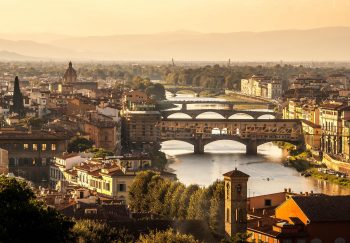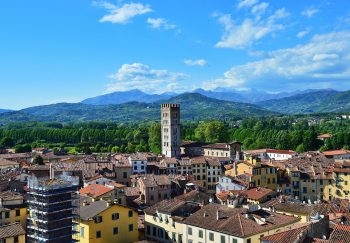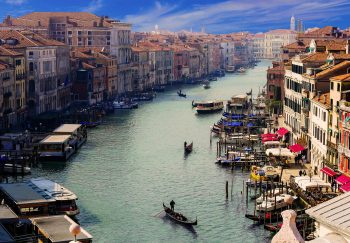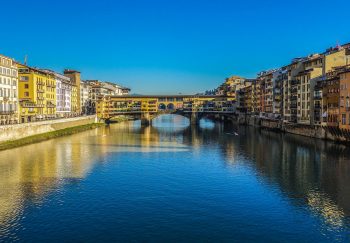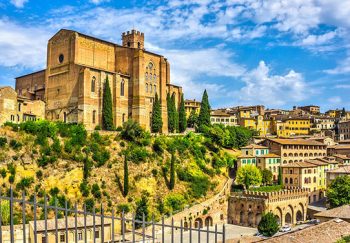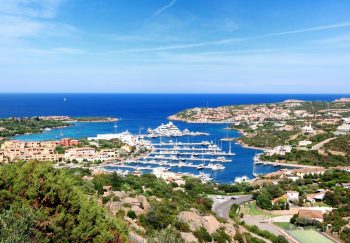Milan seems to be a very easy city to navigate. This is partly due to the fact that the historic center, which is where most tourist attractions are, is compact and easily accessible by foot. It also offers a wide range of public transportation options, which are great for those who don’t want to walk everywhere and those who wish to travel outside of the immediate area around the Duomo.
Below is a list of all public transport options in Milan.
Tickets for Milan Public Transportation
Milan’s public transportation systems use the same ticket system as in many other cities. This is a huge convenience. The company that runs Milan’s public transportation uses the acronym ATM. This is despite what you might think.
The ticket is valid for 90 minutes and costs EUR1.50. Within the 90-minute time limit, you can ride as many trams and buses as you wish. One ticket can be used to change trains for one Metro trip. A Metro ticket can only be used once. For the remaining validity of your ticket, you can ride buses or trams from a Metro station to get out.
You can purchase a “carnet” if you plan to ride Milan’s public transport more than once or twice. It costs EUR13.80. NEH. They can’t all be used at once by more than one person. Each traveler must have their own carnet or ticket.
You can also purchase multi-journey tickets:
- 24 hour pass – EUR4.50 Unlimited trips within 24 hours of validation
- 48-hour pass– EUR8.25 Unlimited trips within 48 hours of validation
- Week Pass – EUR10 – Limit to 2 trips per day for a period of 6 days (yes, it’s less than one week, I don’t know why)
Remember that you must validate any ticket upon its first use. To get in to the Metro station, you will need to insert the ticket at the gate. Trams and buses have a validation machine that you can use to stamp your ticket.
Children under 10 years old (or two per adult paying) can ride free with any of the mentioned tickets. A “Luggage Ticket” is also available on the ATM website for EUR1.50 per bag. This ticket can be used to ride public transport within Milan. Although I have never purchased one, I usually take my luggage to the nearest train station and then take a taxi to my hotel. It’s a good idea if you travel by Metro, bus, tram, or tram with luggage.
Please note that these prices only apply to what are known as “Urban Tickets”, which are a geographical designation that covers Milan’s city center. You will need a separate ticket if you want to visit the Rho Fiera fairgrounds area. These are called “Fiera Milano Tickets” and cost EUR5 roundtrip or EUR8 for one-day passes (good if your plan is to travel back and forth multiple times in a day).
You can also buy tickets in Metro stations, either at ticket windows, or automated machines, as well as ATM tickets at newsstands, tobacco shops, and bars around Milan.
This page on the ATM website explains all ticket options and how to validate them.
(adsbygoogle = window.adsbygoogle || []).push({});
Metro in Milan
If given the option, the Metro is my preferred way to get around a city. It’s the same in Milan.
There are four Metro lines that run through Milan: M1 (red),M2 (green), M3 (yellow), M5 (lilac, or light gray). A portion of the M5 line is under construction and will be completed this year. By 2020, a fifth line is planned to extend to Linate Airport. You can navigate the Milan Metro the same way you would in Paris or Washington D.C., with the directions named after the station at each end. Some lines may split at certain points, so be sure to check which train you board if you are not near the fork.
The hours that Metro runs are not listed on the official ATM website. It says that it runs from “about”, 06:00 to “about”, 00:30. Except on December 25th and May 1st, when it runs from 07:00-19:30. During peak travel times, trains arrive approximately every 2-8 minutes. They are less frequent on weekends and in the evenings.
The large M signs at the foot of stairs leading to underground stations indicate where Metro stops are located in Milan. There are many stops within the historic centre, including the Duomo and Centrale Stations.
Click on the image icon located under the heading “Pictures”, on this page. To see a network map showing all Metro lines and suburban railways, click on the link. Although it’s not large enough for navigation, I recommend that you pick up a Metro map once you reach Milan. They are free and available at ATM Point offices at many Metro stations.
Buses in Milan
Milan’s bus network has more than 80 lines and covers more ground than the Metro. Bus lines are identified by both numbers and names. The names indicate which direction the bus is going (similar to Metro lines).
The bus stops in Milan are usually just a pole made of metal with a placard that lists the stops along with their numbers. The stop you are standing at is highlighted or outlined. The stops below indicate the ones that are coming up. If the name of your destination is highlighted, it is important to locate the stop on the opposite street.
Buses won’t stop if passengers are waiting to board (or anyone on board who is ready to get off). If there are multiple buses stopping at a stop, you should step towards the curb and raise your hand (as if you were hailing a taxi). The driver will not know that you aren’t waiting for another line. You can indicate your desire to get off at another stop once you are onboard by pressing one of the buttons close to your seat.
Buses start running at 05:30-06:00, and then run until 00:30-01.45 depending on which line. Some routes have night buses that operate from approximately 02:00 to 06:00 on peak hours (usually weekends).
When you board the bus, make sure to validate your ticket.
Trams in Milan
Although there are only 17 tram lines within Milan, they provide service in areas where buses can’t. (It’s not that I don’t love trams. I do however prefer to ride them in Milan, even if a bus would take me there. Some historic trams are still in use from the 1920s. There are many newer ones. I love the old trams, especially the wooden benches inside. However, nostalgia makes me nostalgic. The newer trams are larger and more air-conditioned.
Both trams and buses share the same numbering system. Trams get the lower numbers while buses get the higher ones. Although there are exceptions, generally speaking, if a transit map shows that the nearest stop is numbered 3-13, it’s likely a tram. One notable exception is Line 18, which is a bus.
In a few ways, tram riders can treat trams the same way they would buses. Trams stop only when someone is waiting at a station or someone wants to get off. To indicate you want to get on, you will need to move closer to the curb or raise your hand as the tram approaches. You will also need to validate your ticket before you board the tram. You can indicate your desire to get off the tram by pulling a cord or pushing a button once you are onboard.
You should also be aware that tram lanes can sometimes cross the sidewalk into a car lane. If you are disembarking, make sure to look both ways.
Taxis in Milan
You must know that taxis in Milan are not available for hailing like in New York City. Taxis can’t stop at any place. There are designated taxi stands in Milan that you must visit to obtain a cab. In non-busy areas and off-hours, you won’t find a long queue of taxis at the stand. Instead, you will see a phone connected to a dispatch service.
Non-Italian speakers may find this intimidating. You can also call a taxi service yourself, even though you are in your hotel room. Asking someone at your hotel for help with arranging a taxi is a good idea. You can also go to major attractions such as the Duomo or Centrale stations in the city center.
Taxi fares rise in the evenings and night. This is not cheating, it’s just the law. You should also know that taxi fares increase when the driver leaves. This means that you will see a charge even before you actually get in the taxi.
Milan has the same safety rules for taxi riding as anywhere else:
- Before you climb in the car, make sure it has a functioning meter. Also, ensure that the driver is using it.
- You should be aware of or other destinations, so you are fully informed.
Learn more about tipping in Italy
Milan bike sharing
BikeMi is Milan’s bike-sharing program. It was launched in 2008. It has more than 200 stations in the city. Visitors can also use it.
The BikeMi program can be signed up here. Subscriptions are available for one-day, one-week, and one-year. To unlock your bike, you will need a code to register. The bike can be used for two hours. After that, you will be charged EUR0.50 per half hour. You’ll be charged EUR2 an hour after that.
You can return your bike to any BikeMi station within the city. This makes it easy to keep to the two hour limit.
